Italian Neo-realism and The Bicycle Thieves
In the five years following the Second World War, Italy saw many changes. In 1946 it became a Republic and a more liberal society, which meant that women could vote for the first time. Mussolini was dead and gone; his fascist dictatorship, which had aligned Italy with Nazi Germany against the allies, had left a dent in the nation’s pride. This was exacerbated by economic depression and high unemployment, which plays a big part in the 1948 neo-realist film by Vittorio de Sica; ‘Ladri de Biciclette’. Translated into English, it means Bicycle Thieves (1948), although it is also known as ‘The Bicycle Thief’.
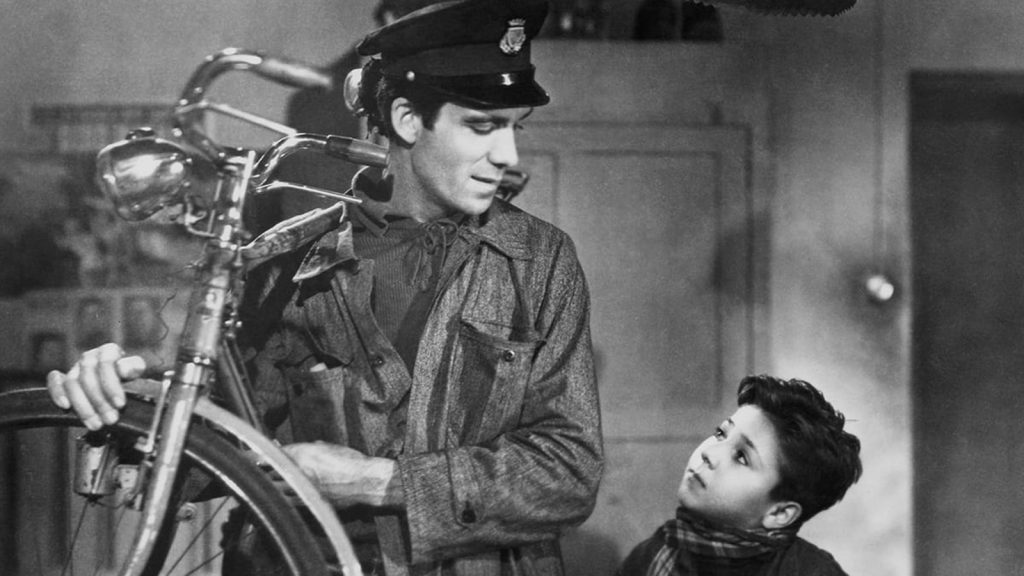
The film is a perfect example of the Italian Neo-realist genre, which was dominant between 1945 and 1950. The style is tough and gritty, dealing with the struggles of everyday life and real issues. The players are usually ordinary, working-class people and not trained actors; the sets and locations are real and not fabricated; the subject matter is often dark. The movement was made popular by directors like de Sica and Roberto Rosselini, credited with being the first to produce an example of this film-making style with his film Rome, Open City (1945).
Specific releases from this movement received critical acclaim in America, although the genre failed to find a faithful following in its native Italy and fizzled out at the end of the 1940s as the Neo-realist directors moved to a more personal style of films and were eventually replaced by a new generation of young directors, with a different approach and agenda. Just as the neo-realists had replaced many so-called ‘white telephone’ movies from a previous era, so too were their films superseded by a different movement.
Neo-realism tended to deal with working-class issues, set in rural towns and provinces. In Bicycle Thieves, the protagonist is an unemployed man who is desperate for work. He has to provide for his family; a wife and a young son. He is offered a job putting up posters. The only condition of the job is that he must have his own bicycle. He is explicitly told, “No bicycle…no job!” Luckily he has a bike, but it is in a pawn shop and must be retrieved so that he can begin the new job. His wife turns over her best bed linen as collateral against the bike, and Antonio goes to work.
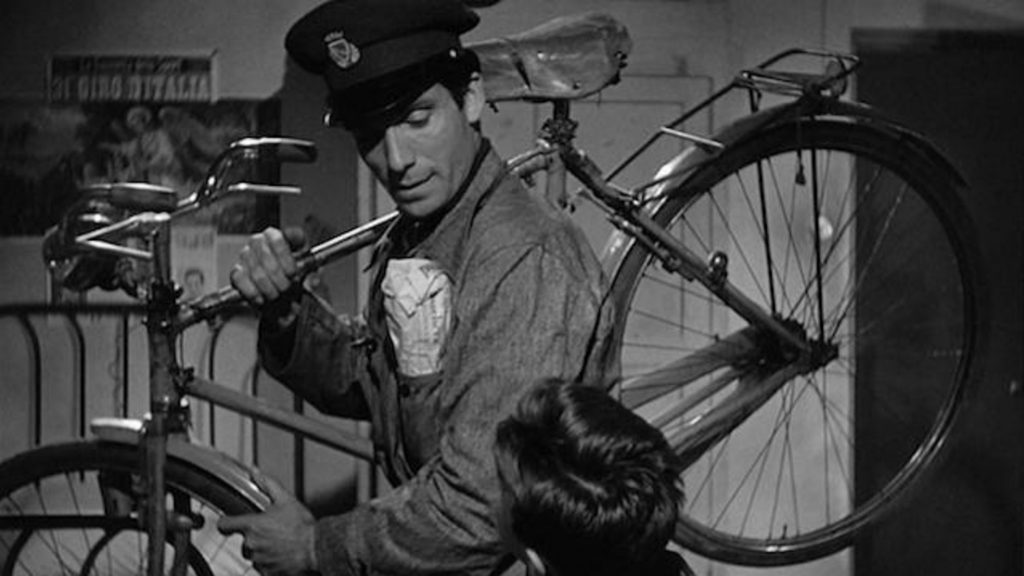
The strong relationship between the father and son is established very early on. A chip off the old block, little Bruno (played by the best actor in the film – Enzo Staiola) mirrors his father’s mannerisms and is a dutiful and loving son, proud of his father holding him in the highest esteem.
After falling foul of a sneaky bicycle thief while working, Antonio spends the remainder of the film searching for his bike and the thief. Accompanied by young Bruno, we begin to see the events unfold as if through the child’s perspective. As he runs along beside his father, he is exposed to all kinds of tense circumstances and moments of hostility. The two suspect a bicycle at the local market and, much to the traders’ disgust, demand to read the serial number. They are met by disappointment when it is found not to be Antonio’s bicycle.
They then pursue an older man who is seen talking to someone who Antonio believes to be the thief. He badgers the older man, following him into a church and pleads with him to reveal the thief’s whereabouts. Drawing a lot of attention to himself, we witness Antonio’s desperation worsen in his desire to locate the thief and, more importantly, his bicycle. We also witness young Bruno’s disappointment in seeing his father reduced to such uncharacteristically aggressive behaviour. In a particularly shocking scene, Antonio slaps Bruno across the face in a moment of anger. The child’s eyes are enough to break the hardest heart.
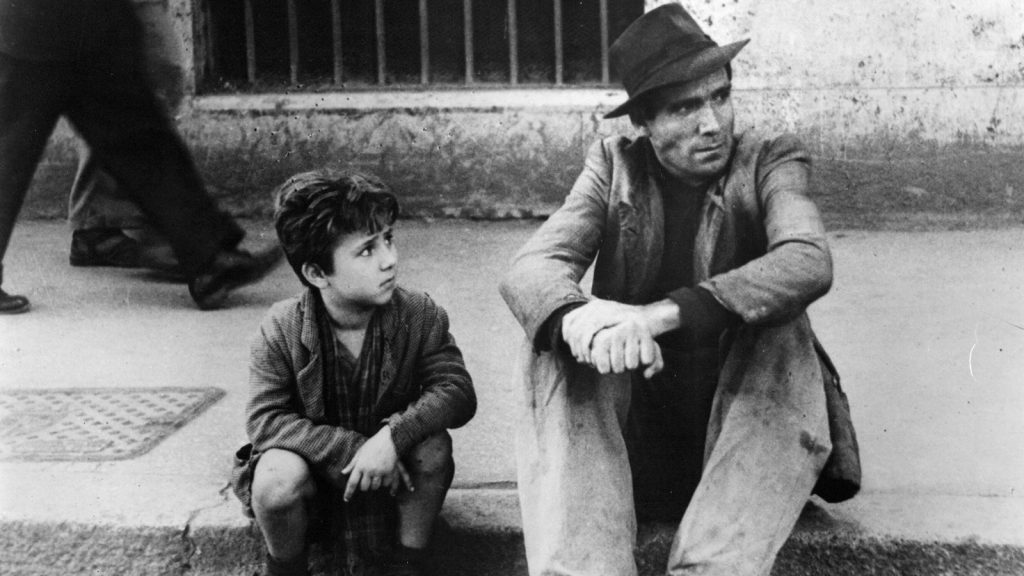
What ensues is a moving scene in which the father apologises to the son and takes him for a meal to make it up to him. Although he can ill afford to pay out for a restaurant meal, Antonio treats young Bruno to this special luxury.
Inevitably, things go from bad to worse as they search for the thief and bicycle continues. Antonio finds the young man that stole his bike and attempts to find out where his bicycle is. However, the local neighbours rally round the young thief and support him, turning on Antonio and suggesting he leave. The young man then fakes a seizure, and Antonio is blamed for this; by the time the police turn up, they advise Antonio to leave well alone as there are no witnesses and the neighbourhood seems to be hostile towards outsiders.
Having now exhausted his last hope of retrieving his bicycle, Antonio becomes a bicycle thief himself. Sending Bruno home on a bus, he targets an unattended bike leaning temptingly against a wall and attempts to ride off on it. He is seen doing this by the bicycle’s owner and pursued by a mob who eventually catch him. The crowd is angry and treat him like a lowly thief, humiliating him by slapping his face and seizing him by the arms.
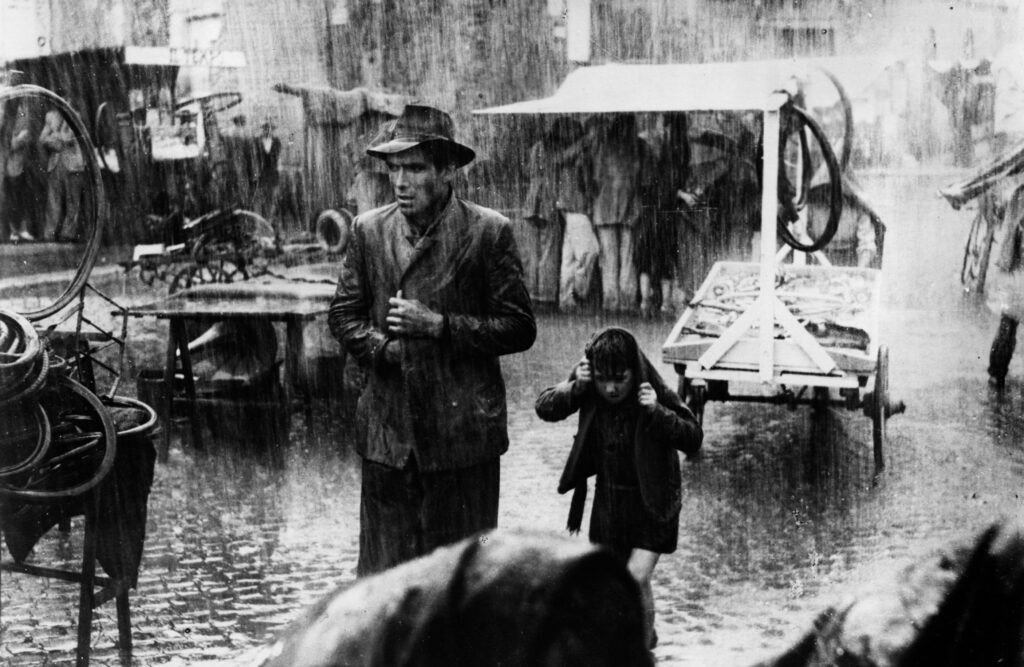
Bruno has not got on the bus as his father had instructed but has instead witnessed all the events unfold. Crying and worried for his father, he runs into the crowd and pulls at his coat, besieging the crowd to stop. Seeing the young boy in such a terrible state, the bicycle’s owner decides to have mercy on Antonio and lets him go. The father and son walk away, dejected and disappointed at having failed to retrieve the bicycle. The credits roll, and the film ends unresolved.
The performances of the main players are believable, and the young Bruno is more than memorable. The themes are heart-wrenching and gritty, making Bicycle Thieves one of the best-loved and finest examples of the Italian Neo-realist movement. The film was well-received in America in particular.
The film has gone on to influence many modern-day film-makers, most notably Martin Scorsese, when he came to make his first films in the 1970s like Mean Streets (1972) and Taxi Driver (1976). This film-making style opened up a fresh approach to cinematic techniques used to recreate an authentic and visceral experience for the audience. It also fuelled the debate on how real an artform can truly be as a representation of life.
Did you enjoy this review of Bicycle Thieves?
You can read more of our film reviews here.
Please join in with us on social media on Facebook, Instagram, Tik Tok and Twitter. We really appreciate all the likes, shares, retweets etc., and we would love to hear from you and continue the wonderful celebration of all things cinema on these platforms.
If you love to watch videos on YouTube, then please subscribe to our channel here. There’s lots of fun and informative videos uploaded that we hope you will enjoy!
We have a passion for movies and aim to produce entertaining and informative movie-related content. It certainly is a lot of hard work, but we love films so much that it’s worth all the effort. We have to keep the lights on and make sure we have plenty of caffeine to keep all of the articles, videos and social media posts coming, so if you like our work, then please consider supporting us at Buy Me A Coffee here. You can also become a More Movies patron on Patreon here.
To help support us here at More Movies, we do use advertising in a few places, so we appreciate it if you do not use AdBlockers on our site, as this helps keep a few pennies trickling in. We also utilise affiliate links throughout the site, usually to help guide our readers to places to stream, rent or buy the movies we talk about. One of the biggest sources for movies online is Amazon Prime Video, where you can stream over 18,000 films. If you are interested in Prime and haven’t signed up yet, you can get a 30-day free trial via this affiliate link, which helps support us too.


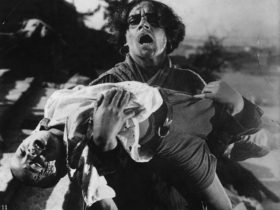


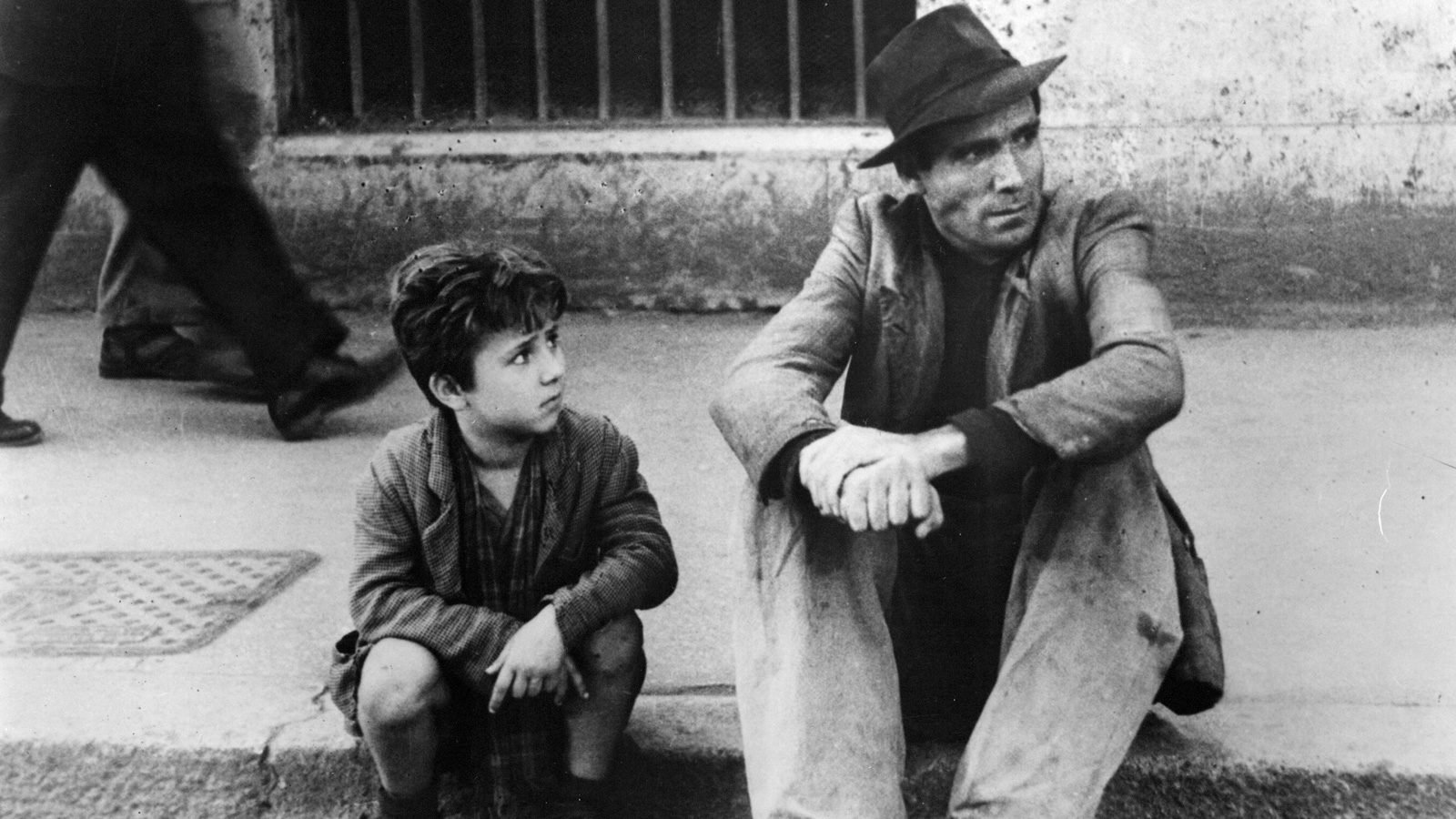
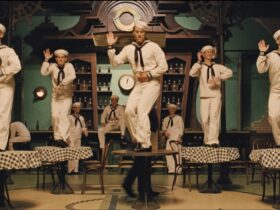



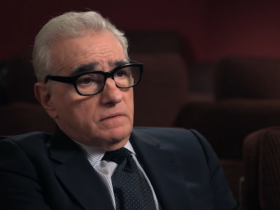

thank you for this information. i am a film student and it is articles like this one that help us pass! thank you!
Great Insite!
Can you speak to Bruno’s final gesture (when he takes Antonio’s hand). What does it reveal about familial bonds, in general? Also how is their relationship depicted through De Sica’s use of camera angles?